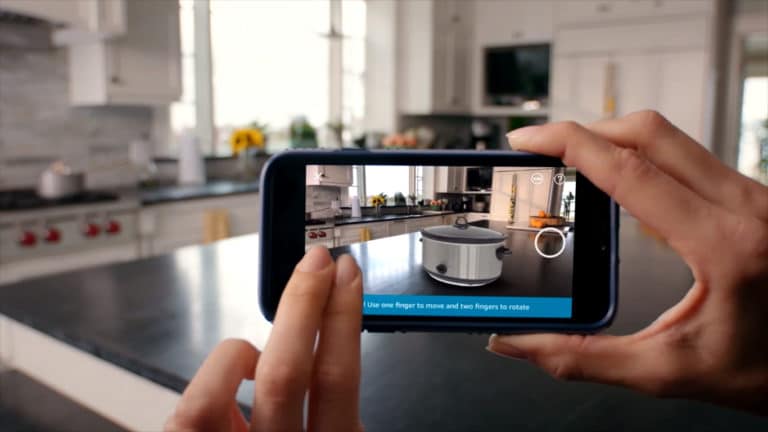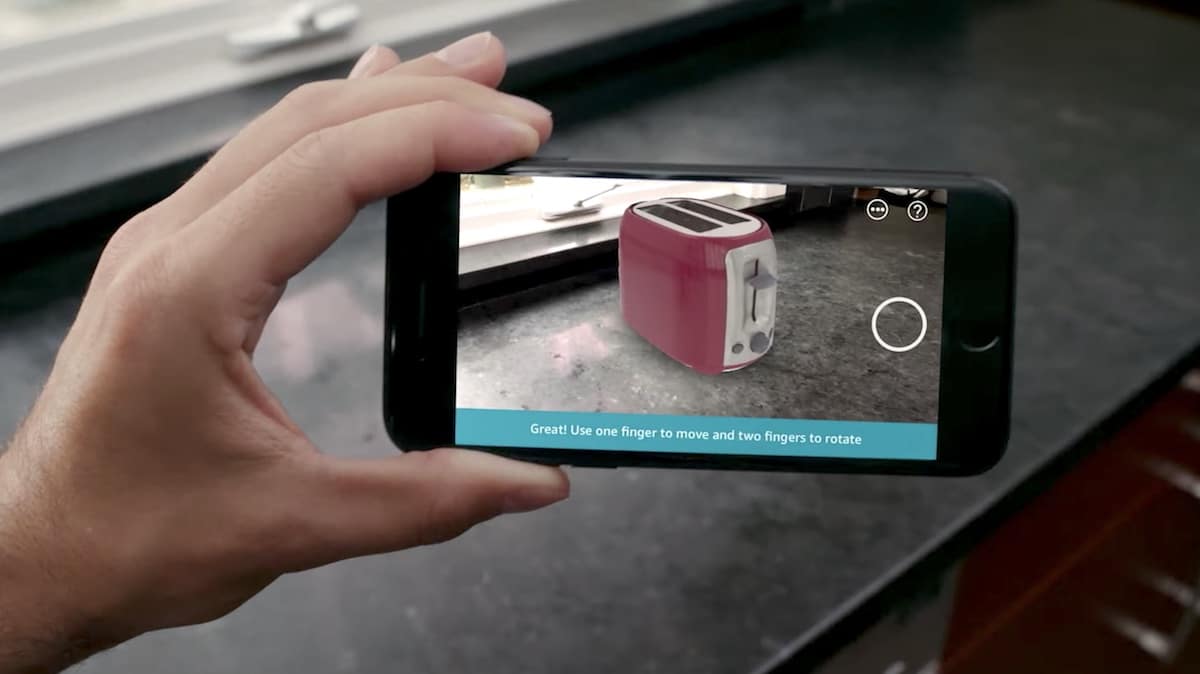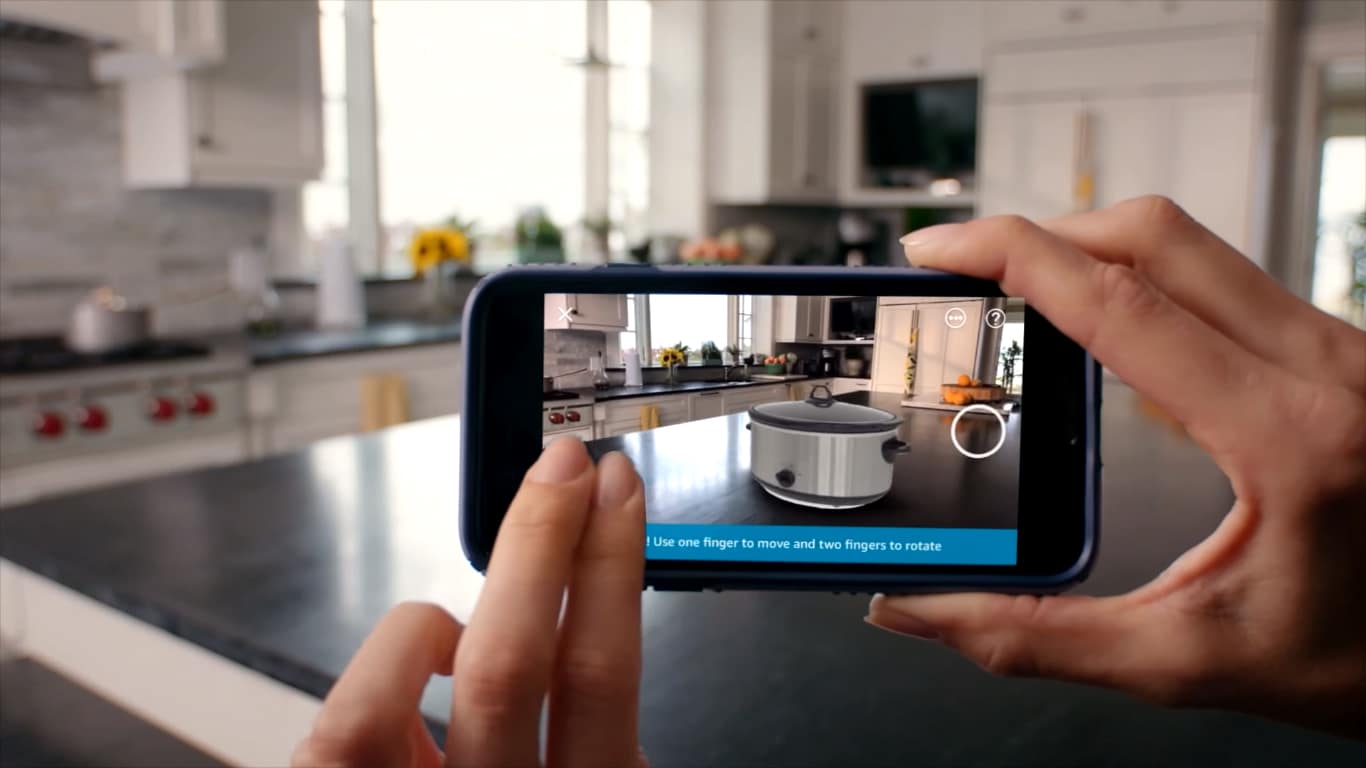
This is the third in a series of articles that examines how the so called Four Horsemen of Tech — Apple, Google, Facebook and Amazon — are positioned for augmented reality. Microsoft, the dark horse whose work with AR/MR brings it back into the race, will represent the final stretch of the series. This installment examines Amazon.
Among tech giants making moves into augmented reality — the point of this series — Amazon has probably been the least discussed in the tech media and analyst corps. Its AR moves have indeed been the quietest of the bunch, but potentially massive.
Amazon’s potential play with AR is also perhaps the least shrouded in mystery and road map speculation. AR has clear implications for supporting e-commerce and boosting Amazon’s ability to sell things and improve margins — core organizational priorities.
Stepping back, one thing that’s been clear in this series is the common reason — though differing paths — that tech giants enter AR. It’s the same reason tech giants ever enter emerging areas: to protect, boost or diversify a core product.
For Apple, that core revenue stream is selling iThings… and AR will help it boost slowing iPhone sales. As we examined with Facebook, AR will allow it to boost the multimedia social sharing on its news feed and core use case.
To that end, AR will boost Amazon’s core business of selling you stuff. This could play out in a few ways, mostly orbiting the act of shopping for things online, increasing the probability of purchases and decreasing the probability of returns.
Cash FLOW

At the most basic level, Amazon’s forays into AR involve computer vision. Here it’s moving into visual search, an area we explored recently with Google. It involves searching for items using the smartphone camera instead of text queries.
For Amazon, the benefits are clear: increase the volume and quality of product searches by making it easier on users to search. This builds from the decade-old FLOW app. Meant to query a database of book covers, it lets users snap a pic to search Amazon.
But with advancements in computer vision and object recognition, the proposition is now to search for a broader range of products. The idea is to find exact matches for products, but also suggest similar or complimentary products as Amazon has always done.
Beyond using the smartphone camera to search and discover products, AR will take the next step in qualifying products. That will involve virtually placing furniture, appliances and electronics in one’s home to make sure they fit (in style and dimension).
“We’ve been working with Amazon to bring their shopping experience to [Google] Tango,” Lenovo’s Carter Agar told ARtillry recently. “For big ticket purchases, historically you would try to visualize what it would look like in your home. Maybe you went to the store and took pictures. Amazon thinks a lot of that can be simplified through allowing consumers to visualize that product.”
There are other places Amazon is applying this principle, such as the Echo Look. Meant solely to snap mirror-length pictures of users, it’s a play towards virtually fitting, overlaying, and suggesting apparel. And the endgame there, as always, is driving orders.
Returns on Investment

But it’s not just about orders. Amazon’s success is based on razor thin margins executed at massive scale. That makes maintaining and improving margins an organizational obsession. And to that end, AR can help with a key piece of the puzzle: returns.
One of the biggest margin-depleting factors facing Amazon is large-order shipping and returns. That’s driven the company to work with Google Tango and Lenovo in the ways suggested above, to help consumers visualize furniture placement.
The first place it has applied this principle is flat screen TVs — the biggest culprit of costly returns. As discussed in our fireside chat with Lenovo (video below), this has been Amazon’s biggest driver for pushing Tango-powered virtual TV fittings.
“From Amazon’s perspective, they can improve conversions significantly,” said Agar. “And one of the big issues that Amazon encounters is returns for big products like TVs because they don’t fit or they don’t look right. So anything they can do to reduce the return rate is potentially huge cost savings.”
Bigger and Better

In fairness, Amazon isn’t the only company taking this image-based approach. Wayfair and IKEA have launched AR features that let shoppers visualize furniture placement. And Pinterest lets users take pictures of products to search for similar items.
But Amazon doesn’t need to be first out of the gate with the nascent technology, it just needs to be bigger and better. It inherently has the “bigger” part covered. As for better, we believe it’s working on visual search tech to surpass eCommerce competitors.
Its work in machine learning and AI for voice (Alexa) positions it well in this race. Those parallel efforts indicate Amazon’s interest in using alternate forms of search to increase the levels of interaction — and ultimately order volume — from online buyers.
Regardless of which AR angle Amazon pursues and puts the most muscle behind, it will incorporate computer vision and object recognition in some way to bring it to the next level of its business. In other words, selling you more stuff.
